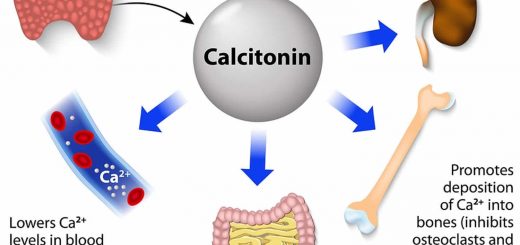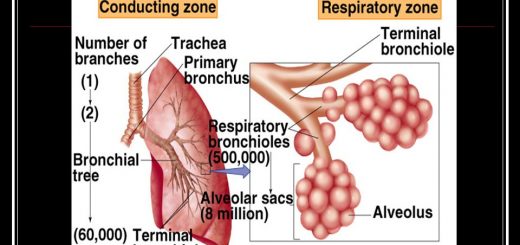Cardiac muscles properties, Conduction system of the heart, Cardiac excitability and contractility
The conducting system offers the heart its automatic rhythmic beat, It transmits signals generated by the sinoatrial node to cause contraction of the heart muscle. It consists of cardiac muscle cells and conducting fibers (not nervous tissue) that are specialized for initiating impulses and conducting them rapidly through the heart.
Conductivity
Conductivity is the ability of a cardiac muscle to transmit the cardiac impulses that originated in SAN to all parts of the heart.
Conduction pathway
Because cells are electrically coupled via gap junctions, excitation to the threshold of one cell typically results in the spread of this action potential throughout the heart. In the normal heart, the SA node is the pacemaker because it has the highest intrinsic rhythm. Below is the normal conduction pathway for the heart.
SA node → internodal fibers and atrial muscle → AV node (delay) → Purkinje fibers→ ventricular muscle.
HR is normally controlled by the electrical activity of the SA nodal cells, the rest of the conduction system ensures that all the rest of the heart activated along in proper sequences for efficient pumping action, All cardiac tissue conducts the electrical impulses, but the following are particularly specialized for this function.
- AV node: These cells are specialized for slow conduction, they have small diameter fibers, a low density of gap junctions, and the rate of depolarization is slow in comparison to tissue that conducts fast. The significance of this slow conduction is to allow complete filling of the ventricles and to protect the ventricles from abnormal atrial rhythm.
- Purkinje cells are specialized for rapid conduction. Their diameter is large, they express many gap junctions, and the rate of depolarization is rapid. The significance of this fast conduction is to allow contraction of both ventricles at the same time.
Cardiac excitability
Cardiac excitability is the ability of the cardiac muscle to respond to the adequate stimulus by contraction.
All or none rule
Because of the syncytial nature of cardiac muscle, stimulation of any single atrial muscle fiber causes the action potential to travel over the entire atrial mass; similarly, stimulation of any single ventricular fiber induces excitation of the ventricular muscle mass. That is why each cardiac muscle sheet (atrial or ventricular) behaves as a functional syncytium and obeys the ” all or none rule” like a single skeletal muscle fiber.
Like other muscles, the cardiac muscle is excited by adequate stimuli and responds by generating an action potential followed by contraction. The general features of the excitability of the heart are like those described for nerve and voluntary muscle, but there are certain differences, which are of fundamental significance in relation to the function of the heart.
Absolute refractory period (ARP)
During the fast action potential, the time corresponds to the depolarization, early repolarization, the plateau, and part of repolarization of cardiac action potential; the heart is in its absolute refractory period (ARP) and does not respond to excitation (inactive).
This mechanism prevents sustained, tetanic contraction of cardiac muscle, Indeed, it gives time for myocardial relaxation, sufficient to permit the cardiac ventricles to fill with venous blood, this is as essential to the normal pumping action of the heart as is a strong cardiac contraction.
Relative refractory period (RRP)
During this period, the heart cell begins to respond again to excitation. However, the stimulus must be higher than normal. Application of a supra-threshold stimulus to a region of normal myocardium during late phase 3 evokes an action potential.
Throughout the remainder of phase 3 and 4, the cardiac cell completes its recovery from inactivation to start responding to a normal stimulus that originates from the SAN.
Cardiac contractility
It is the ability of the cardiac muscle to convert chemical energy into a mechanical form of energy. The contraction of the cardiac chamber is called systole and its relaxation is called diastole. There are two types of contraction:
- Isometric contraction where the fibers contract without shortening. The tension developed in them rises very much and most of the energy is liberated as heat. No work is done. The pressure inside the heart raises to a high level, which is essential to open the aortic and pulmonary valves. The volume of the heart remains constant.
- Isotonic contraction where the cardiac fibers shorten but the tension developed in them does not increase i.e. it remains the same throughout work. The pressure inside the heart raises only slightly, the volume of the heart diminished and the heart pumps its blood into the lungs or the body by decreasing its size.
Excitation contraction coupling in cardiac muscle
The major event in myocardial contraction is a dramatic rise in the intracellular calcium Ca2+ level. In resting muscle, attachment of the actin and myosin heads to produce contraction is inhibited by troponin and tropomysin (a relaxing protein complex). Increased intracellular calcium level interacts with troponin C to remove the inhibition of the actin site on the thin filaments.
When the wave of depolarization passes over the muscle cell and down the T-tubules, Ca2+ is released from the sarcoplasmic reticulum (SR) into the intracellular fluid. In addition, the Ca2+ entry via the L-type Ca2+ channels triggers the release of calcium stored in the SR (calcium-induced calcium release).
During contraction, cross brides occur when thin and thick filaments slide past one another to shorten each sarcomere, the bridges form when the myosin heads from the thick filaments attach to the actin molecules in the thin filaments, there are two processes that participate in the reduction of intracellular Ca2+ that terminates the contraction:
- 80% of the calcium is actively taken back up into the SR by the action of the Ca2+ ATPase pump.
- 20% of the calcium is extruded from the cell into the extracellular fluid either via Na+– Ca2+ exchanger located in the sarcolemma or via sarcolemmal Ca2+ ATPase pump.
There is an important factor influencing the systolic performance which is the number of cross-bridges cycling during the contraction, the greater the number of cross-bridges cycling, the greater the force of contraction, The systolic performance is determined by 3 independent variables:
- Preload
- Contractility
- Afterload
Preload: Frank-Starling law of the heart ”auto-regulation of cardiac pumping”
The law states that: within physiological limits, the tension develops in cardiac muscle is directly proportionate with the initial length of its fibers, or in other words to the end-diastolic volume (preload).
Another way to express this law is ”within physiological limits, the heart pumps all the excess blood that comes to it without allowing excessive stasis of blood in the veins”. This intrinsic ability of the heart to adapt itself to changing blood volume returned to the heart is the basis of autoregulation of cardiac pumping.
Contractility (Inotropic State)
The acceptable definition of contractility would be a change in performance at a given preload and afterload, Thus, contractility is the change in the force of contraction at any given sarcomere length.
- Acute changes in contractility are due to the changes in the intracellular dynamics of calcium.
- More calcium increases the availability of cross-link sites on the actin, increasing cross-linking and the force of the contraction during systole.
- Sympathetic stimulation to the heart increases myocardial contractility, while parasympathetic decreases it.
- Drugs that increase contractility usually provide more calcium.
- Calcium dynamics do not explain the chronic losses in contractility, which in most cases are due to overall myocyte dysfunction.
Afterload
Afterload is defined as the ”load” that the heart must eject blood against arterial pressure. Afterload is increased in 3 main situations:
- When the aortic pressure is increased (elevated mean arterial pressure); for example, when hypertension increases the afterload, the left ventricle has to work harder to overcome the elevated arterial pressures.
- When the systemic vascular resistance is increased, resulting in increased resistance and decreased compliance.
- In the aortic stenosis, resulting in pressure overload of the left ventricle, In general, when afterload increases, there is an initial fall in the stroke volume.
Properties of cardiac muscles, Cardiac automaticity & Conduction of electrical impulses
Histology of the heart, Cardiomyocytes types, Ultrastructure & features of cardiac muscle fibers
Mediastinum contents, Aorta parts, Brachiocephalic trunk, Pulmonary trunk & Thoracic duct trunk
Electrocardiogram (ECG) importance, ECG test results, analysis & abnormalities
Heart & Pericardium structure, Abnormalities & Development of the heart
Heart function, structure, Valves, Borders, Chambers & Surfaces



